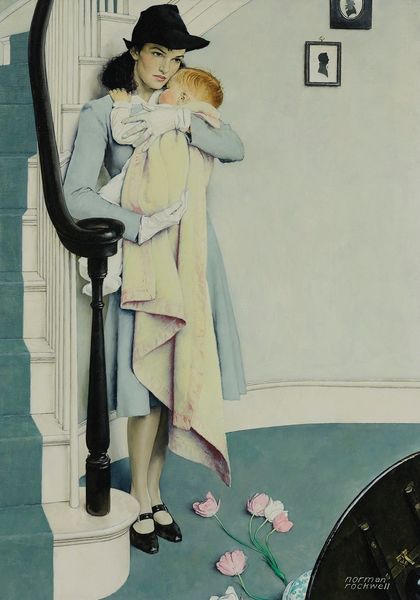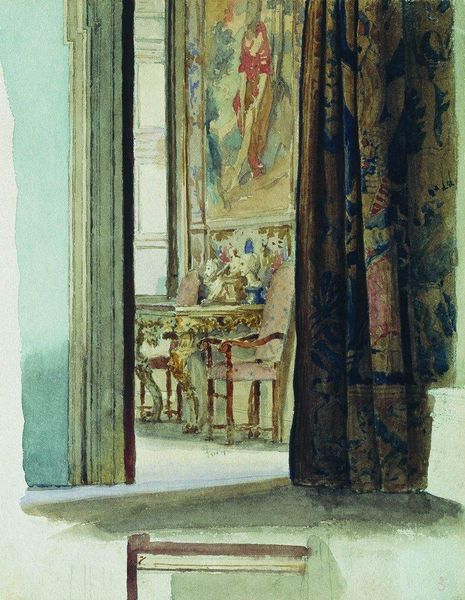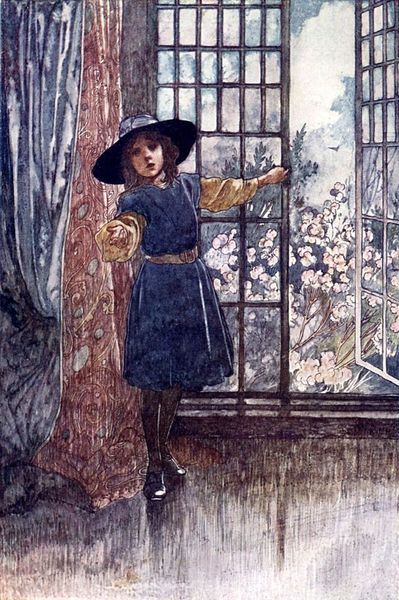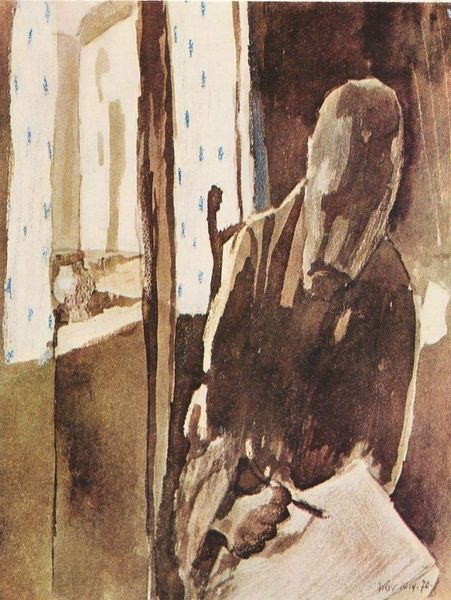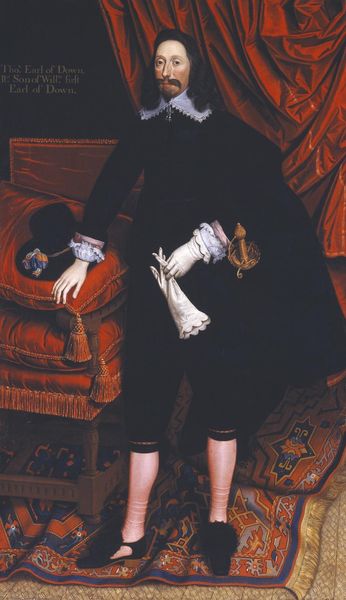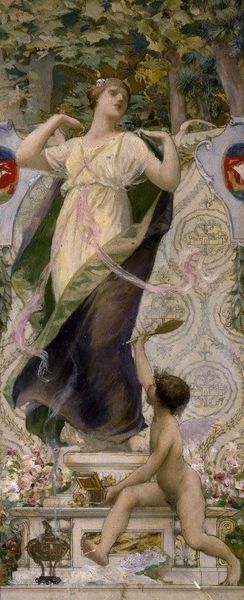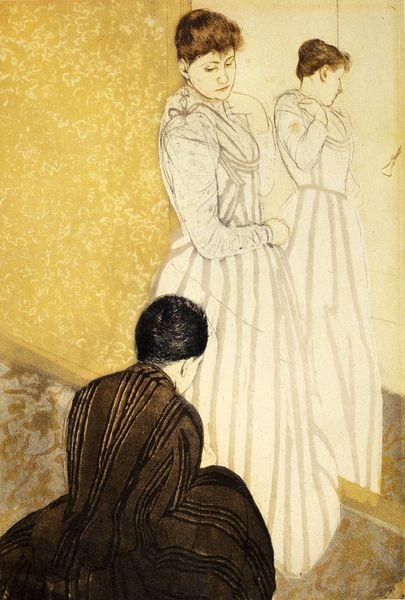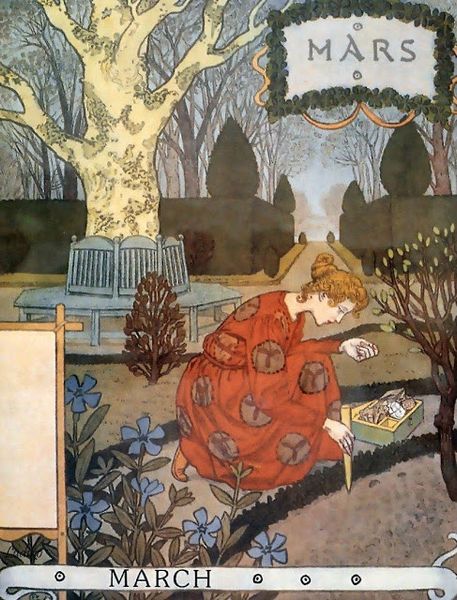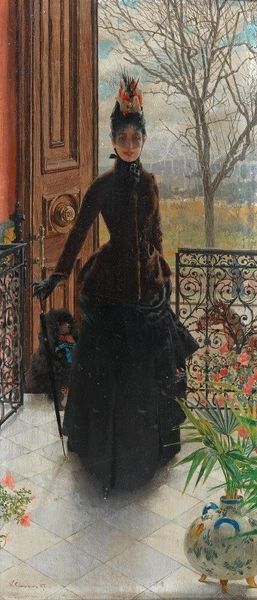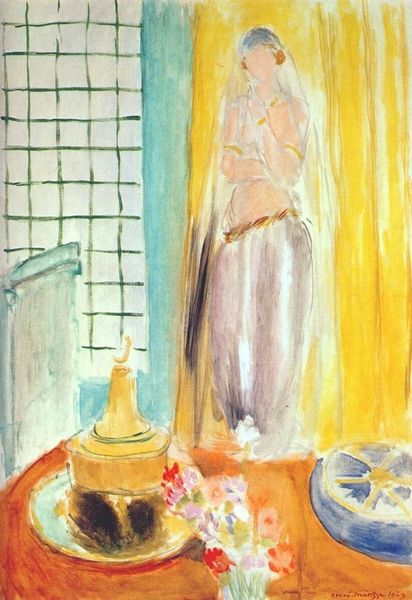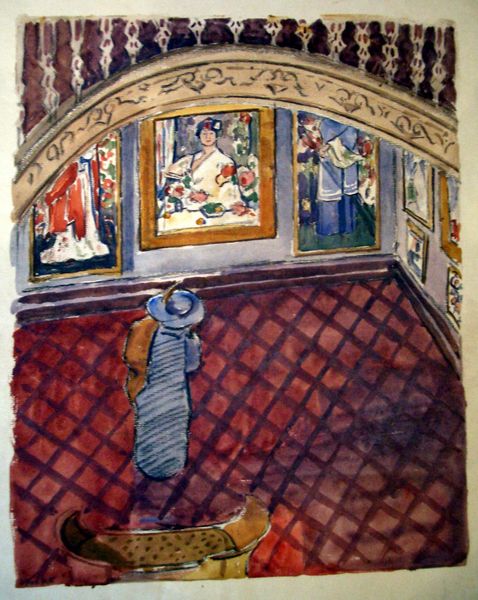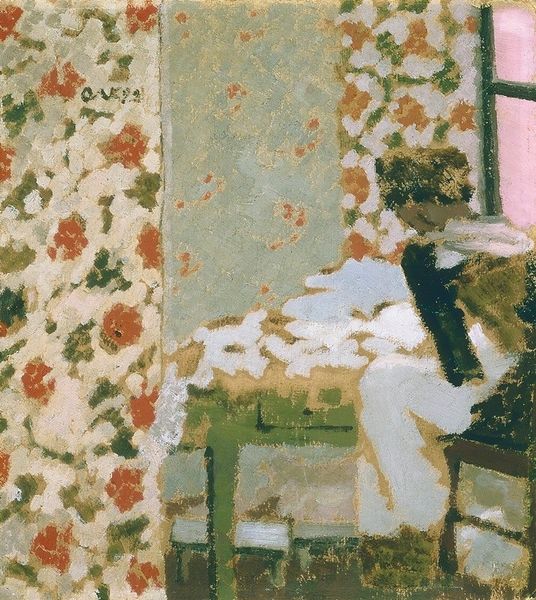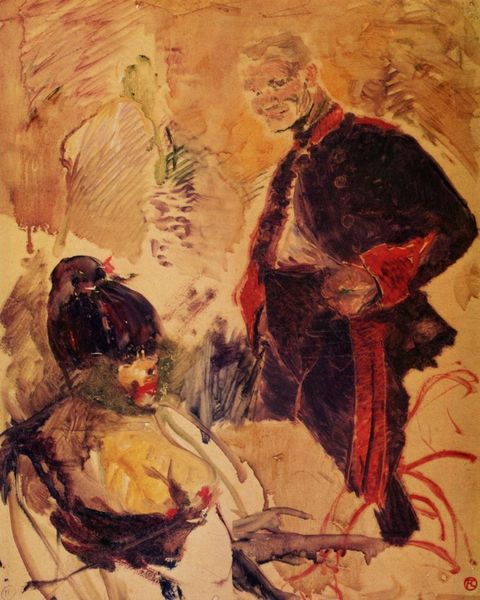
painting, watercolor
painting
landscape
fantasy-art
figuration
watercolor
symbolism
Copyright: Kay Nielsen,Fair Use
Curator: What an evocative piece! Kay Nielsen's watercolor, "The Man Who Never Laughed," certainly leaves a lasting impression. Editor: It does. I find the palette rather somber, the setting almost claustrophobic with that densely patterned wallpaper, creating a mood of stifled emotion, maybe even suppressed trauma. Curator: Trauma resonates here. The figure is turned away from us, gazing into a mirror reflecting not his own face but a strangely alien, emotionless visage. Who gets to decide which identities are legitimized through laughter? Editor: This feels so performative. I immediately think of the societal pressures surrounding emotional display, particularly for men, especially during Nielsen’s time, a period steeped in anxieties about masculinity. The very formal attire and enclosed domestic space—the window seems almost barred—hints at restriction, societal expectations imposed upon the individual. Curator: Absolutely, this artwork allows a great opportunity to explore societal and internalized pressures relating to masking, and identity performance. The artist seems to suggest an inherent conflict between our authentic self and how society dictates we should behave or, in this case, *feel*. Editor: The setting and subject become almost like a stage. Consider how theatrical the curtains are, draped dramatically around the windows and walls. There's an emphasis on display and constructed identities, mirroring the performance of a life devoid of authentic joy. Nielsen here seems critical of those very constraints imposed upon his male subject. Curator: Agreed. We must interrogate the underlying reasons for this inability to laugh, this disjunction between internal emotion and external expectation, considering both historical context and its continuing relevance today within discussions around performativity. What are the broader social and political forces at play that silence, suppress, or demand particular emotional expressions? Editor: What I find intriguing here is the lack of resolution. We are presented with a state of unease, of imbalance, prompting reflection. As viewers we are forced to confront how environments shape individuality. The title alone sparks dialogue. What does this say of laughter in public and private spheres? What historical weight, for instance, does joy possess? Curator: Indeed. Nielsen's piece invites us to look not just at the image but within ourselves, questioning our roles in perpetuating norms that might necessitate such masks. Editor: A powerful commentary then, rendered through subtlety and symbolic weight. Food for thought, undoubtedly.
Comments
No comments
Be the first to comment and join the conversation on the ultimate creative platform.
